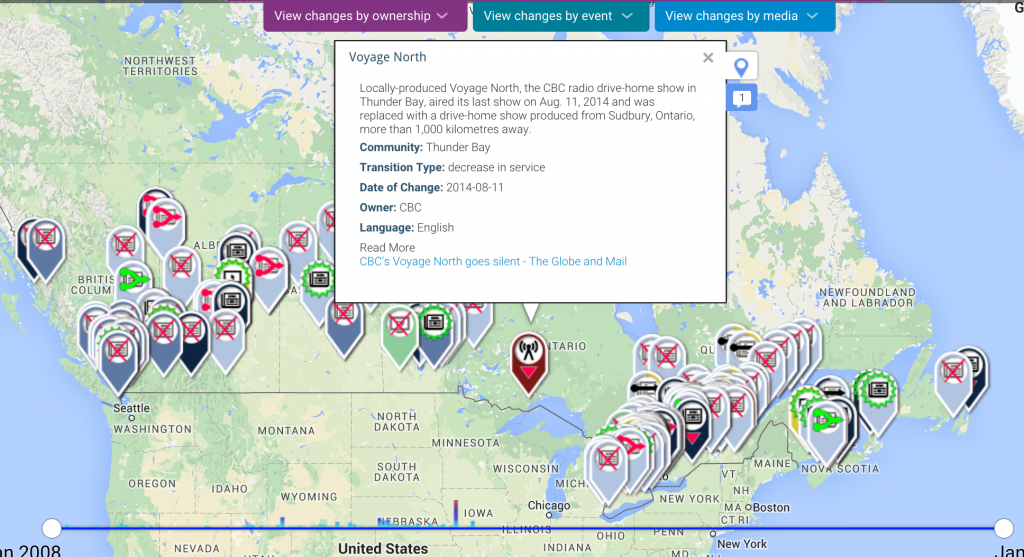New research project examines local news poverty
The impact of newsroom cutbacks, consolidations and closures will be the focus of a new study examining local news poverty in communities outside of Canada’s major media centres.
By Local News Research Centre staff
The impact of newsroom cutbacks, consolidations and closures will be the focus of a new study examining local news poverty in communities outside of Canada’s major media centres.
Residents of Canada’s largest cities can turn to multiple sources for local news, but people who live in smaller cities, suburban municipalities and rural areas typically have fewer options, and in recent years their choices have become even more limited, says research team member April Lindgren, principle investigator for the Local News Research Project at Ryerson University’s School of Journalism.
“Access to local news is important to the democratic vibrancy and health of a community because people who have access to news are then equipped to participate in decisions that affect them,” Lindgren said.“ This project will examine the extent to which local news poverty is an issue outside of major cities where often there are still multiple newspapers and many other local news sources.”
The local news poverty research team brings together scholars with expertise in journalism, social media research and participatory mapping. In addition to Lindgren, it includes Jaigris Hodson, an assistant professor of interdisciplinary studies at Royal Roads University, and Jon Corbett, an associate professor in community, culture and global studies at the University of British Columbia, Okanagan.
Mapping changes to the local news landscape
The first phase of the local news poverty study involves the launch of a crowd-sourced map that documents gains, losses, service increases, and service reductions at local online, radio, television and newspaper outlets across the country. Lindgren is responsible for the map’s actual content, while the map itself is based on the Geolive participatory mapping tool developed by Corbett’s SPICE Lab (Spatial Information for Community Mapping).
“This map was unlike any other map we’ve tried in the past primarily because of the complexity of the information that needed to be presented,” Corbett said, noting that users will be able to view changes over time in a variety of ways including by media type and media ownership. When the map is launched in early 2016 it will present data on news outlet launches, closures and consolidations dating back to 2008.
Continue reading this story on the Ryerson Journalism Research Centre website.
H.G. Watson was J-Source's managing editor from 2015 to 2018. She is a journalist based in Toronto. You can learn more about her at hgwatson.com.

